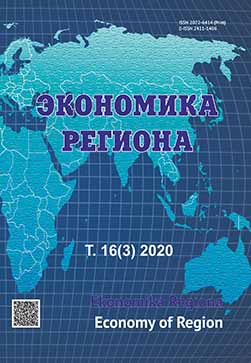Исследование социально-экономической детерминации рождаемости на основе анализа региональных панельных данных
Examination of Socio-economic Determinants of Fertility based on the Regional Panel Data Analysis
Author(s): Aleksandr Valeryevich Trynov, Svetlana Kostina, Galina Alekseevna BannykhSubject(s): Economy
Published by: Институт экономики Уральского отделения Российской академии наук
Keywords: fertility; econometric modelling; socio-economic determinants of fertility; total fertility rate; mathematical model; birth order rates; constituent entities of the Russian Federation; birth order
Summary/Abstract: The continuing fertility decline in Russia encourages the study of socio-economic factors influencing it as well as the relations between these factors. The contradicting results of international and Russian research do not allow unambiguous conclusions in this field. The paper aims to analyse the influence of socio-economic factors on the total fertility rate, as well as on fertility rates by birth order (first, second, third, and fourth with subsequent children). We hypothesise that the birth rate of the first and subsequent children is affected by various socio-economic factors. Using panel data econometric analysis, we examined the information on 85 constituent entities of the Russian Federation for the period from 2005 to 2017. We applied fifteen main and three additional explanatory variables (regressors), which reflect demographic, economic and social (infrastructural) factors of fertility. The analysis includes the development of models with fixed effects for the total fertility rate and fertility rates by birth order, and examination of the interdependence of certain factors. As a result of the analysis, we revealed the differences in the influence of individual variables on the dynamics of fertility rates for the first child and subsequent children. For example, the influence of real monetary income on the birth order rates is gradually decreasing, while the influence of the unemployment rate, reserves-to-production ratio, and marriage rate is multidirectional. Additionally, in some cases, we discovered a negative relationship between the birth rate and number of regressors (the number of abortions, the share of the urban and working-age population, the pre-school enrolment). The research results can be considered by public authorities when developing the state demographic and social policy at the federal and local levels.
Journal: Экономика региона
- Issue Year: 16/2020
- Issue No: 3
- Page Range: 807-819
- Page Count: 13
- Language: Russian

